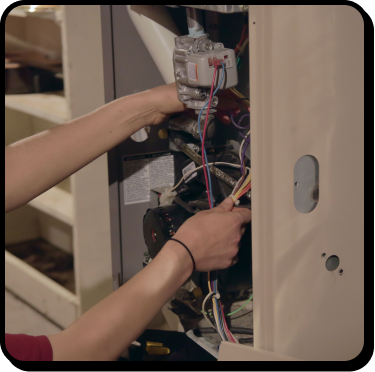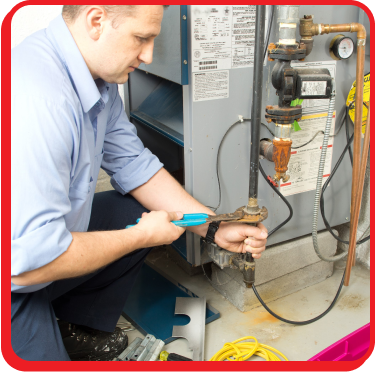When you need furnace repair in Lakewood, CO, Fox Heating, Cooling & Plumbingprovides responsive service. Heating issues here tend to show up during sudden colder days, when your system is under the most strain. A furnace that cycles off too early, struggles to reach the thermostat setting or gives off unusual odors is likely headed toward failure. Our HVAC technicians understand the common failure points in both older and newer heating systems found in Lakewood homes. Most issues can be resolved with expert repair work rather than replacement, so you can count on us to keep your furnace running its best.
Furnace Repair in Lakewood, CO
Any Repair over $300

Fast, Efficient Furnace Repair
Most furnace problems don’t start with a loud failure or a total shutdown. They show up as slow heat-up times, uneven temperatures or extra noise during operation. It’s easy to dismiss these early signs, especially when the system still produces heat. But those small changes often point to internal wear or a part beginning to malfunction.
Running the furnace in that state increases the chance of a full breakdown. Minor faults like a sensor that misreads the flame or a motor that hesitates on startup can cause the system to cycle more often. That adds stress to components that were otherwise working fine. Over time, the entire system becomes less efficient and more likely to fail when demand spikes.
Heating systems tend to run hard during the colder months, and that kind of load makes early detection more important. Technicians look for patterns how fast your furnace starts, how long it runs and how evenly it heats the space. These clues point to the underlying issue without requiring a technician to disassemble every part of the unit.
- Rooms staying cold even when the heat is running
- Loud startup or shutdown noises
- Blower runs constantly without heating
- System takes too long to reach the thermostat setting
- Visible dust buildup around vents or returns
The repair itself depends on what’s found. If a sensor is cutting off heat too soon, it can be cleaned or replaced. If the blower motor lags during startup, the capacitor or relay may need attention. Not every issue requires major work, but skipping furnace service allows the problem to grow.
The goal of any furnace repair is to restore heating. Once the problem is corrected, the furnace doesn’t have to work as hard to do its job, reducing wear and extending your unit’s lifespan.
Lakewood’s Local Furnace Service
When homeowners in Lakewood need furnace repair, they turn to Fox Heating, Cooling & Plumbing for work that’s both efficient and reliable. We’ve been repairing systems across the Denver metro for years, and that experience matters when every home has its own setup and history. Customers rely on us to identify issues quickly and keep the process straightforward. We offer free estimates and back our work with a reputation built on strong reviews and repeat business. If your furnace needs attention, Fox Heating, Cooling & Plumbing has the experience and track record to get it fixed right.

Call Fox Heating, Cooling & Plumbing for expert furnace repair in Lakewood! You can also count on us for assistance with AC repair, as well as furnace installation and HVAC maintenance services.
